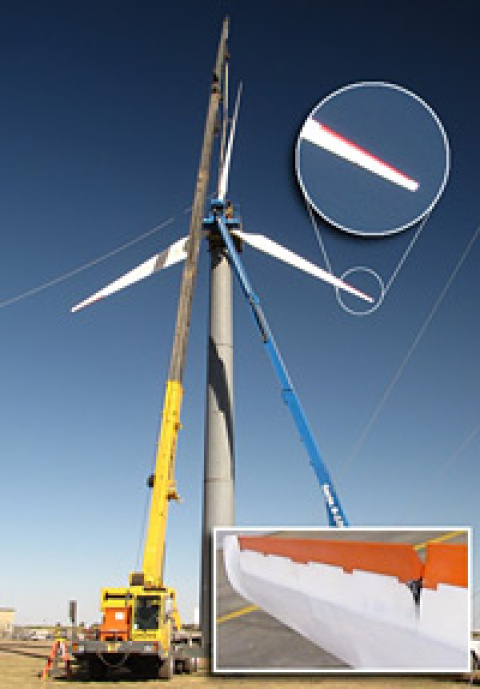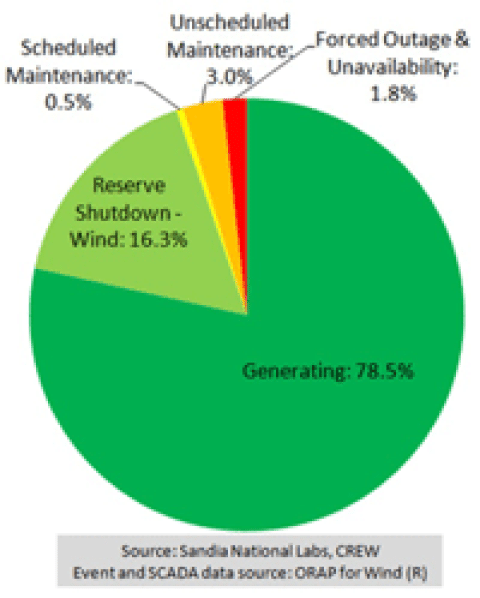The Department of Energy (DOE) Sandia National Laboratories (SNL) completed fabrication and began field testing a set of wind turbine blades with active load control capabilities.
Wind Energy Technologies Office
December 19, 2011This is an excerpt from the Fourth Quarter 2011 edition of the Wind Program R&D Newsletter.
In October, the Department of Energy (DOE) Sandia National Laboratories (SNL) completed fabrication and began field testing a set of wind turbine blades with active load control capabilities. Based on the proven Sandia CX-100 blade design, the Structural and Mechanical Adaptive Rotor Technology (SMART) blades incorporate small trailing-edge flaps along 6 feet of each 30-foot blade (Figure 1) as well as internally mounted structural sensors and surface mounted aerodynamic sensors. The small light-weight flaps are driven by individual electric actuators and are designed to respond very quickly to wind velocity changes caused by gusts or vertical wind shear, resulting in improved control during peak loads experienced by the turbine blades and drivetrain components.
Improved control reduces ultimate and oscillating (or fatigue) loads on wind turbine rotors and can lead to reductions in loads on other turbine components such as the drivetrain, gearbox, and generator. This, in turn, is expected to reduce maintenance requirements (Figure 2 shows the impacts maintenance can have on a wind turbine's generation availability) and may allow a given turbine to use longer blades which capture more energy. In both cases, the ultimate impact is reduced cost of wind energy. With the ever increasing size of wind turbine blades and the corresponding increase in nonuniform loads along the span of those blades, the need for more sophisticated load-control techniques has increased interest in the use of aerodynamic control devices (with associated sensors and control systems) distributed along each blade to provide feedback load control (often referred to as smart structures or smart rotor control).
SNL has performed extensive simulations of active aerodynamic load control on several turbine configurations and has analyzed the simulation results to estimate the fatigue damage reduction on the rotor. These early simulation results show the potential for significant reductions in fatigue damage and cost of energy, but experimental data are needed to confirm the simulation-based analyses. Although several other research organizations have also been investigating active aerodynamic blade load control for several years, this is the first full set of active aerodynamic load control (AALC) blades to be built and field tested.
The SMART blade project seeks to establish the real impact of integrating small, fast-acting AALC devices into the wind turbine blades on the turbine's cost of energy. The project is multi-faceted and includes simulation studies, wind tunnel testing of AALC devices, and field testing of sub-scale blades incorporating AALC devices, actuators, and sensors.



